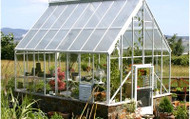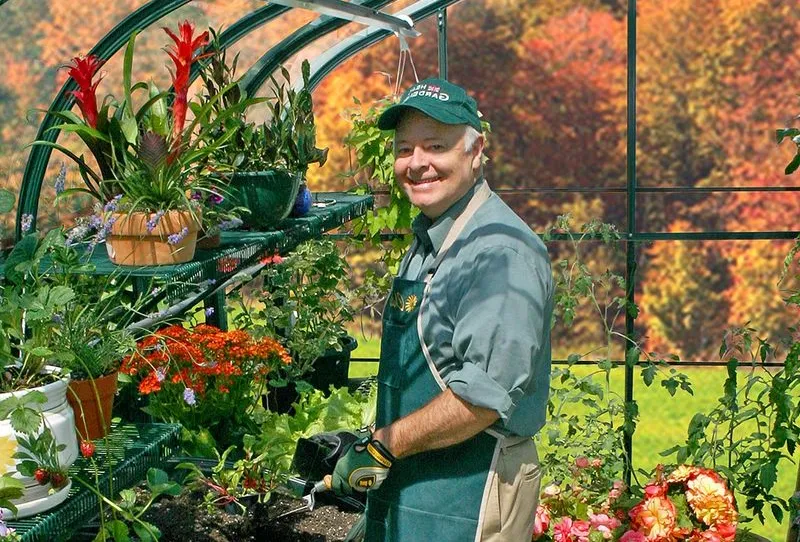Cooling Your Summer Greenhouse
The summer is coming and the weather is (supposedly) heating up. Now is the perfect time to prepare yourself for the impending season! While the outside temperatures may get unbearable at times, there’s no reason your greenhouse should be! Making your greenhouse a comfortable place for both you and your plants should be at the top of your to do list this time of year. Unless you are creating a micro-climate specifically for tropical plants, you should be able to find an escape from the intense sun and heavy humidity right in your own backyard. You can’t control the weather outside, but you can very much control the climate inside your greenhouse. In the coming months it’s more important than ever to pay attention to how much sun your plants and greenhouse are getting. Sure you need to make sure there is enough light, doing things like supplementing with artificial light on rainy days is a great idea. However, this time of year, it’s far more important to make sure your plants aren’t getting too much sunlight. In fact, those dark and rainy days may be a welcome respite from the occasionally brutal rays beating down from the sun. Yes, most of the year the sun is your best friend when it comes to growing plants. But, at least for this season, a proper balance of shading, ventilation and controlling humidity levels are going to be the most important factors in your gardening adventure. But fear not, all you have to do is follow some simple guidelines and the sun won’t be an issue!
Let’s start with ventilation. If you did your research prior to installing your greenhouse, your vents may already be sufficient. If they are large enough for the space and oriented properly to take advantage of prevailing winds, you really don’t have much to do in this sphere. Generally speaking, your upper vents should be about 15% the size of the interior floor area. Additionally, the lower vents should equal about 10% the size of the interior floor. Your typical 8’ x 12’ greenhouse would have 15 square feet of roof vents and 10 square feet of lower vents. Lower vents don’t typically have an ideal opening angle, so long as it is open and air can flow through it you should be fine. The roof vents, however, should open up to 45° for optimal airflow. We carry both manual opening vents as well as some that will non-electronically open on their own when certain temperature thresholds are met. So if you have one and would like the other, we can help you out. Alternatively you can install a thermostatically controlled exhaust fan system. These fans use very little electricity as the thermostat feature ensures it only runs when necessary. These systems are very easily controlled and can be set to automatically turn on when your pre-determined temperature setting is reached. Usually these systems are set to activate when temperatures reach anywhere from 75°- 80° F. Fans are also particularly helpful for ventilating your greenhouse. A good, strong fan, one that’s the correct size for your greenhouse, should be able to clear out any stagnant air in about a minute and a half to two minutes. If you want some quick math to figure out the Ventilation Rate (VR) in cubic feet per minute, check out this little equation. Determine the volume of your greenhouse (Length x Width x Average Height) and multiply by .75. Average height can be determined by measuring halfway up your top roof line. While fans can get the air inside your greenhouse moving, they can’t themselves produce fresh air. To ensure that your fans are working as effectively as possible, fresh air intake shutters should be installed in the opposite end of the greenhouse. The shutters can either be opened by the flow of air provided by the fan or mechanically via shutter motors. If you are looking to install new shutters and would like to know the best size, simply divide your determined Ventilation Rate (VR) by 250. The resulting number will be the required shutter size in square feet. If you are using multiple shutters, divide this figure by the number of shutters being used. It is recommended that the larger the greenhouse, the more shutters you should be using. The general rule of thumb is using two shutters for any space larger than 100 square feet or those having a width exceeding 8 feet.
Now that we’ve covered ventilation, shading is a very helpful way to control the microclimate within your greenhouse. Shading will effectively shield your greenhouse or sunroom from excess sun from roughly 9am to 5pm. If your greenhouses western wall is exposed, shading until 7pm may be required. Shading is best when installed completely over the roof as well as halfway down the south wall. The type of shading and amount necessary will largely be determined by your local climate, sun exposure, greenhouse design and light requirements of the plants you are growing. Shading materials are usually expressed as the percentage of sunlight blocked, so your 70% shading cloth will, in theory, block out 70% of the total sunlight hitting your greenhouse. This to say, your plants will still be receiving 30% of the sunlight, in this hypothetical situation. Shading is roughly 40% more effective when installed on the exterior of your greenhouse. Allow for air circulation by installing the shading 4” – 9” above the glazing surface. Shading paint is a good alternative to shading cloth as it is less cumbersome as well as more customizable. For example, if you only wish to shade a small section of your greenhouse, you have the option to shade only where you want. However, you should use the least amount of shading as you can. Excessive shading can slow plant growth and possibly cause your plants to “reach” for light. This is the process by which plants forego horizontal growth in favor of vertical so you end up with taller, less plentiful plants. No one wants super tall broccoli. If you’re not sure just how much shading you’ll need, here’s a small, helpful guide.
- 30% Snapdragons, Chrysanthemums, Geraniums
- 40% Lilies, Bedding Plants, Caladiums
- 50% Azaleas, Begonias, Camellias, Gloxinias, African Violets, Poinsettias
- 55% Pachysandra, Ivy, Orchids
- 60% Dieffenbachia, Stag Horn Fern, Rhododendron
- 70% Fern, Anthurium, Dracaena, Philodendron
- 75% Palm, Chinese Evergreen
This list is incomplete so go ahead and do some further research if you’re growing something I didn’t mention. Also keep in mind the area in which you live and how much sunlight you’re getting on average. A light meter is a helpful tool to have around. This can help you determine what type of shading would be best for your space. It can also help you figure out how much artificial lighting you will need to keep growing during the winter.
Shading and Ventilation will help prevent your greenhouse from overheating, but it won’t be much help in cooling the place down. In fact, it’s the process of water evaporating inside the greenhouse that will actually aid in dropping the temperature. Water is a great capturer of temperature and energy. The heat inside the greenhouse will be the energy used to evaporate the water from the liquid to gas state. Your fans and shutters create airflow, which will help the process along and the shading will elongate the process limiting the amount of water needed in the system. Much like shading, the amount of moisture required to cool your greenhouse will be the product of many factors. Ventilation systems, shading provided, local climate and daily weather will be the most impactful on your daily moisture needs. Generally speaking, 1-2 gallons per hour for each 10 square feet will be enough. A good misting system can distribute the water evenly throughout your greenhouse, alternatively you can do this yourself it’s just more labor intensive. If doing it yourself, there are a few ways you can go about this. Most common is to soak the floor with a sprinkler hose. Depending on the medium of your greenhouse floor water can be stored for long term evaporation. Pea gravel or bark mulch work best for this purpose. A more accurate and reliable method would be to install an automatic system. These can be attached to humidistats and other weather stations that can keep track of things like humidity and moisture levels. These systems can trigger automatically to provide the necessary amount of moisture to make your plants comfortable without wasting water. Only provide mist for your greenhouse during the daylight hours to avoid excessive humidity at night which can encourage disease and mold growth. Keep in mind that during the night the cool temperatures will raise the relative humidity levels even if your misting systems are offline. If using a timer, set your system to turn off roughly 2 hours prior to sunset. If you live in a dry climate, you may need to supplement your misting systems. A great way to achieve this is with an evaporative cooler. These systems actively cool the air by 10°-20° F as it is drawn into your greenhouse from the outside air. Forced evaporation is a quick and effective way to decrease the temperature while increasing the moisture inside your greenhouse. However, they are rather energy intensive so it’s not an especially cost effective option unless they’re absolutely necessary.
If you, like many, are worried about the amount of water usage I’ve got some tips for you. Rain water catching systems are a great way to naturally source the water you need to grow in your greenhouse. The rain would be naturally supplying the moisture your plants need had you not put a roof over them, plus plants love rain water! Individual plant drip irrigation systems can also help you save some water as they only water the plants you want them to. Automatic watering timers are also effective ways to keep track of your water usage. They, like the individual irrigation systems, use some electricity but they do in earnest help you save water. So, you essentially have to pick your poison. But keep in mind, the electricity used is very small in comparison to the amount of water you can save in the long run. Make sure your hose isn’t leaking anywhere and that your nozzle isn’t spraying everything in existence beside your plants. Be precise when watering your plants and get only around the base of the plants avoiding drips on the foliage. This can not only help save water but also prevents mold and disease growth.
Thanks again everyone for reading! Stay cool in these upcoming hot summer months. We’ll see you again next week!


